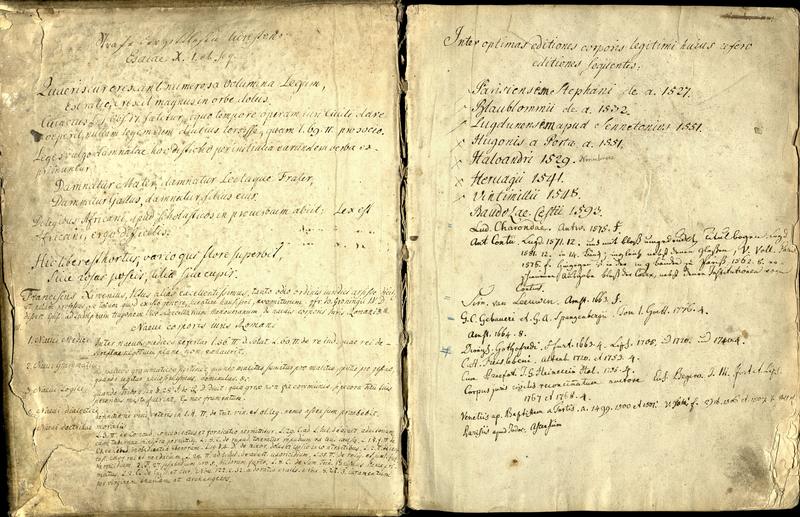Precedents So Scrawl'd and Blurr'd: Readers' Marks in Law Books
Compiling
A repository of legal wisdom. Endpapers have served as repositories for information of all sorts, from signatures and sums to doodles and diagrams. The endpapers of this volume of case reports list 225 Latin legal maxims in alphabetical order. It was not uncommon for lawyers and law students to add helpful information by hand to their printed law books, often making use of the blank pages at the beginning and end of the volume.
An untapped source of English case law? The interleaved pages in this abridgment of Dyer's Reports contain summaries of approximately 425 cases, possibly extracted from manuscript case reports. Unlike the marginal notes in the printed text, they do not cite printed sources. The summaries usually give the term, regnal year, court, and names of the parties. Most of the cases date between 1580 and 1620. The book bears the signature of Butler Buggin (1614?-1677), a barrister of the Inner Temple who was called to the bar in 1642.
A critical view of Roman law. The text on the left begins with a reference to Isaiah 10, which opens with the words "Woe to those who decree unrighteous decrees…", followed by proverbs that complain about the multiplication and obscurity of legal sources. The list at the bottom comes from Johann Gottfried Gröning's De naevis corporis iuris romani ["Blemishes of Roman law"] (1701), and cites the law's medical, grammatical, logical, dialectical, and moral blemishes. On the other side the writer gives his list of the 18 best editions of the Corpus Juris Civilis. The latest is an edition of 1776, allowing us to approximate the date of the annotations.
Readers of all kinds used pens and ink to write in their books. Before the invention of the modern pencil and the ballpoint pen, this was a much more involved practice than it is today, requiring a bottle of ink to dip your quill in and a penknife to ‘mend’ the nib. … [I]t’s a thoroughly material business, involving a variety of tools and objects.
Tom Mole, The Secret Life of Books (2019)


